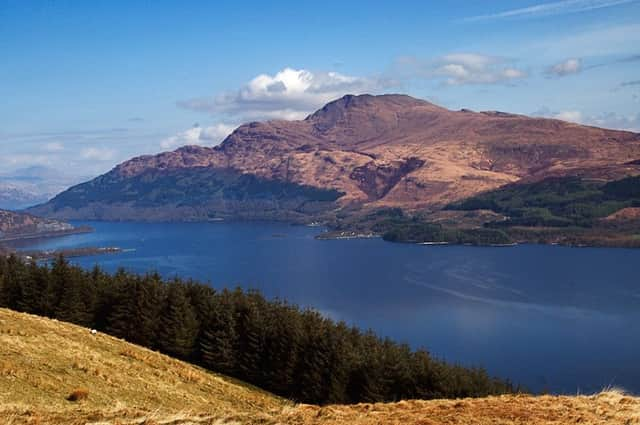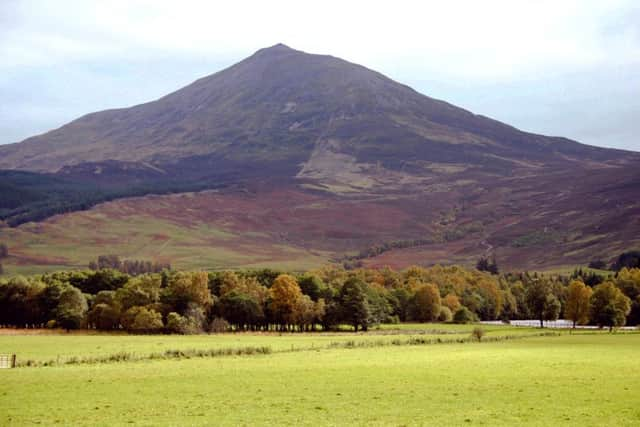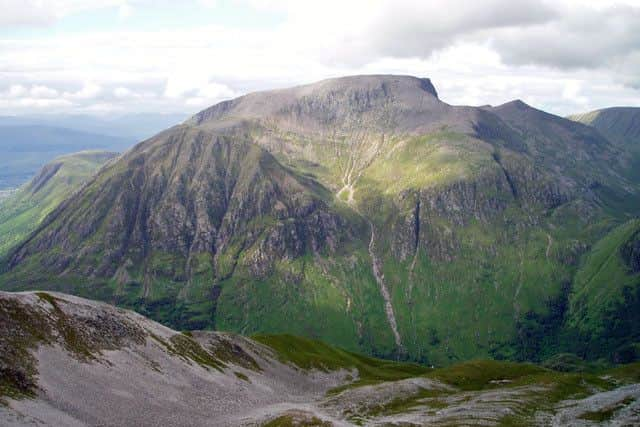Everything you need to know before you climb your first Munro
This article contains affiliate links. We may earn a small commission on items purchased through this article, but that does not affect our editorial judgement.


Scotland’s Munros - mountains over 3000 feet in height - were named after Sir Hugh Munro, who first listed them in his ‘Munros Tables’, published in the Journal of the Scottish Mountaineering Club (SMC) in 1891.
Sir Hugh originally designated 283 summits as Munros, whilst declaring a further 255 summits over 3000 feet to be subsidiary ‘Tops’.
Advertisement
Hide AdAdvertisement
Hide AdSeveral revisions have been made over the years and now there are currently 282 Munros and 227 Tops.


‘Munro-bagging’, the term given to the pursuit of these peaks, has become hugely popular for walkers and mountaineers not just from Scotland but also the rest of the world too.
The best known Munro is Ben Nevis, which is the highest mountain in the British Isles.
So before you go out and attempt to become a ‘compleater’ - the term for someone who has climbed all of the summits - here is everything you need to know to get you started.
Renowned mountaineering expert Stuart Johnston MIC, co-author of Mountain Skills Training Handbook and the Hillwalkers Guide to Mountaineering and instructor who runs introductory courses for Tiso.com, gave us his tips and advice.


There are numerous benefits to hillwalking, as Stuart outlines.
“I think there are a number of things people get from hill or mountain walking, one is the outdoors, and being out in the fresh air, which boosts your physical and mental well-being and it really does amazing things to your body as well as tire you out.
Advertisement
Hide AdAdvertisement
Hide Ad“It builds your fitness, in a way that becomes enjoyable. Rather than having an intense work out, it’s a much more paced work out and fitness programme going walking than it is, say, going to the gym.”
EQUIPMENT


Footwear - Having sturdy footwear such as mountain boots is paramount, as you want to have maximum comfort when you are on your feet all day, but you also need support for dealing with most types of terrain you come across.
Stuart says: “There are three things you need to think about - skills, knowledge and research. For research you want to look at equipment and you have to think about footwear, having some sort of robust mountain boot, my own personal approach to that is to find something that’s light weight but also comfortable. They should feel like slippers on your feet but they give you the upper ankle support that you really need.
“When you are going onto a mountain the terrain can quite quickly change so sturdy footwear is very important.”
Clothing - There are two types of clothing that you will need, the first set (next to skin) should feel comfortable, the second set (shell clothing) should be items of clothing that protect you from the elements, the weather can change quite quickly in Scotland, but should also be easy to remove should you need to take them off for comfort.


For additional clothing you should take:
• A warm water proof jacket
• A warm hat and a replacement
• Two pairs of gloves, one thick set for bad weather
Stuart says: “You have to think about clothing that’s going to be comfortable to walk in, the next to skin clothing, and the shell clothing, that’s the stuff you need for the rain and the wind and the cold temperature to keep it off your body.
“I would still recommend that people think about a layered clothing system so that they can put it on and take it off to suit their own level of comfort.
Advertisement
Hide AdAdvertisement
Hide Ad“Having some gloves depends on the time of the year, but even in autumn you’ll need two pairs of gloves, something with nice dexterity so you can hold on to your map or your GPS and a big thick pair of long gloves should it rain or get really cold which means you won’t lose that dexterity even in cold weather.
“It’s also important to carry a warm hat, plus a spare, because in Scotland it is very windy and it’s very easy for a hat to blow off and blow away.
Rucksack - You need a fitted rucksack that’s the right size to fit in everything you’ll need.
Stuart says: “Think about a rucksack, something that’s specifically designed for your back length, that’s where going into one of the local retail shops can come in handy because you’ll get good advice on the volume and capacity you will need to make sure all the survival equipment you need to take with you is going to fit in your pack.”
A torch - A wearable light, like a head torch, can help you maintain visibility even in the worst of conditions.
Stuart says: “I would absolutely recommend a head torch and make sure it is working and carried at all times. On Autumn nights, which draw in earlier, you will want to be able to see where you are going.”
First aid kit - This can help give you a temporary solution to any light injuries you sustain.
Advertisement
Hide AdAdvertisement
Hide AdStuart says: “A wee personal first aid kit for dealing with soft tissue injuries and blisters is definitely useful to have.”
Food and drink - Food can be a great source of energy but it is also rewarding to enjoy after a long stretch of walking. It is also important to stay well hydrated and have a steady supply of liquids (especially water) should you need them.
Stuart says: “Take comfort food, something that you enjoy eating, a healthy lunch and of course plenty of fluids whether they are hot or cold.”
HOW TO NAVIGATE
It is of utmost importance that you learn how to navigate before you set out, although paths and routes to the summit can sometimes be clearly defined, this will not always be the case. Weather conditions can also affect your visibility and judgement, so knowing how to navigate using a map and compass is a great way to ensure you are ready for any challenge you may face.
The use of handheld GPS devices (not mobile phones as the signal strength and battery life can be unpredictable at best) can often be useful with features such as precise location information, topographical maps and route planning to help you on your way. Their widespread availability and cheap cost make them accessible to most but they can’t take the place of the ability to read a map using a handheld GPS should only be used as a supplement to a decent map and not as a replacement. GPS coverage cannot be guaranteed, or your device’s battery could go flat.
Stuart says: “This is where we get into the skills section, to begin with people should take on a low level hill and buy a 1 to 25,000 or a 1 to 50,000 scale map and a compass. Learn to use the compass and map read before setting out. On your initial walks try to stick to paths and well worn routes to reduce the complexity, however there is no substitute for learning how to use a map and compass in the right way.”
INFORMATION
Books - There are many great books out there on the subject of Munro bagging but Stuart suggests the Scottish Mountaineering Trust Munros handbook.
Advertisement
Hide AdAdvertisement
Hide AdStuart says: “It’s an excellent little book that will inspire journeys into the Scottish mountains you can pick out the ones that are easy to drive to and with time you can plan out trips to some of the harder to get to or more remote Munros.”
The internet - Websites such as the Scottish Mountaineering Club’s website and the WalkHighlands website can also be very useful.
Recommended Munros for beginners - Ben Lomond in the Trossachs and Schiehallion are two examples of less challenging Munros that may be a good place for beginners to start due to their accessibility.
Stuart says: “Ben Lomond in the Trossachs and Schiehallion in Perthshire are less technically challenging. Though every Munro is challenging in their own way in terms of safety, these are Munros that have more clearly defined pathways to the summit.”
TRAINING
There are a range of great hill walking and mountaineering clubs in Scotland both national and regional and you can find a list here.
These clubs can help build up your confidence and walking with more experienced members can also help you learn the ropes quicker. They are also a great source of information and routes and can help when it comes to equipment.
If you would prefer to take courses then you can find some great beginner’s courses here.
Advertisement
Hide AdAdvertisement
Hide AdStuart says: “I wouldn’t recommend anyone going out on their own to do a Munro for the first time. I would say either join a walking club or take one of our Tiso courses. Find a course that suits where you are geographically one that’s near you.
“I’d definitely advocate getting some training before you take on a big mountain challenge, the training will give you confidence and give lots of tips and ideas for how to get started and approach it the right way, this will open up the mountains to you a bit more because it will build your confidence.”
Finally is there any other advice Stuart would give?
“Know when to turn back. It’s not just about making it to the top, its about having a nice day out. If the weather becomes challenging then feel comfortable stopping, turning around and heading back, you will still have achieved something and had a good day out and that’s part of hill walking - knowing when to stop when the weather demands it.”